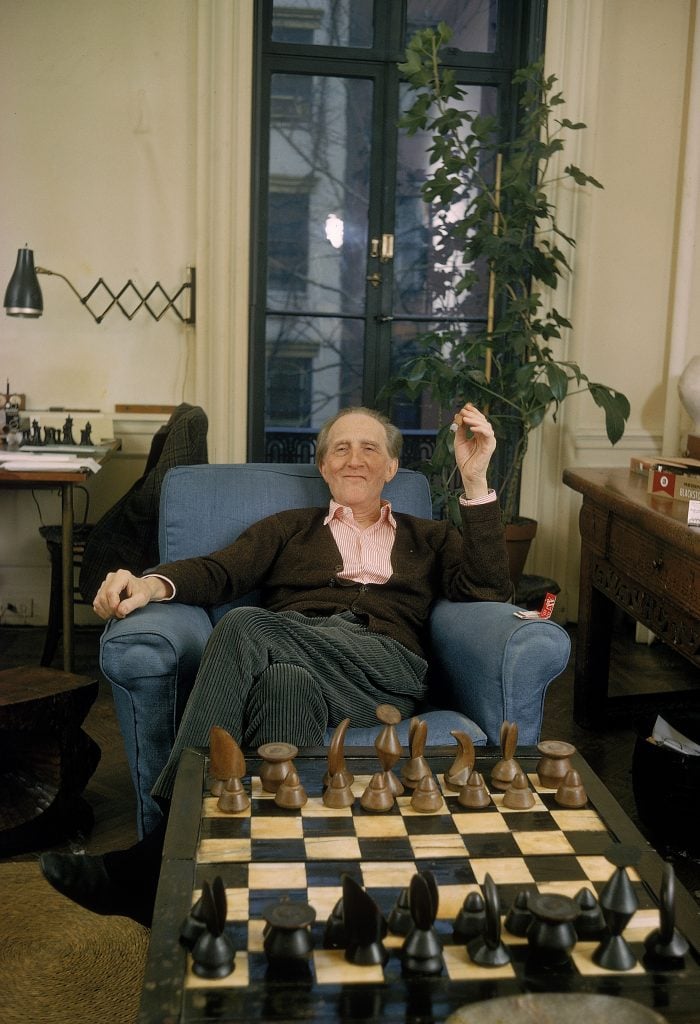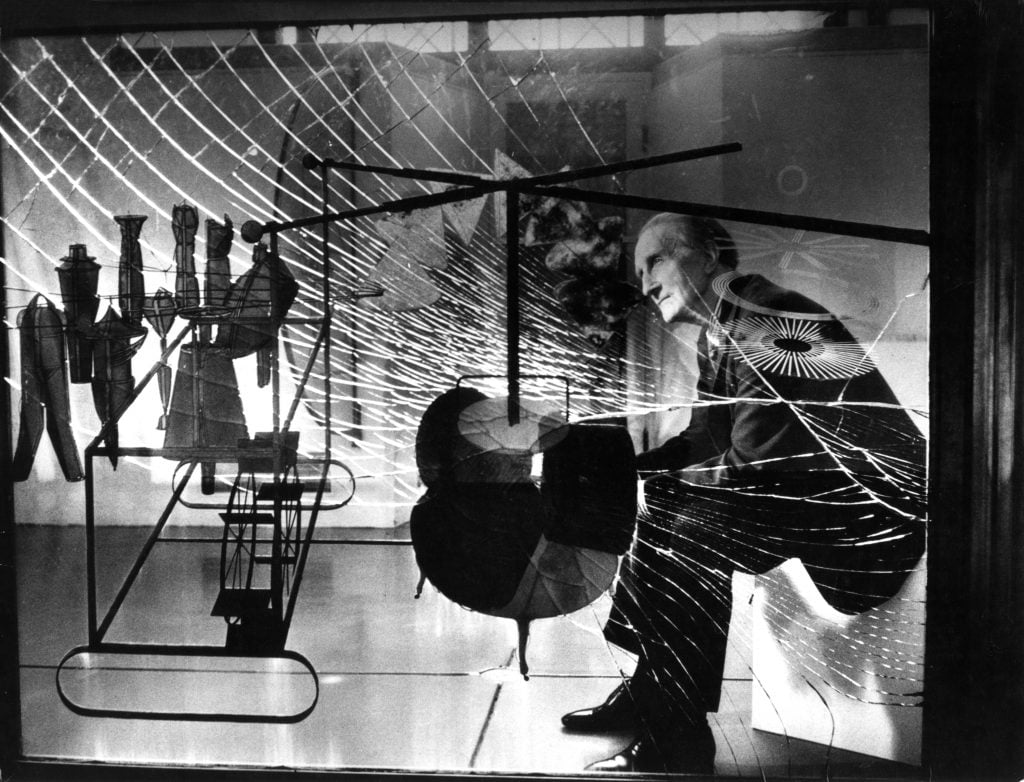Art World
Art Bites: Marcel Duchamp Had a Thing for Chess
He turned the game into Dadaist performance art.

He turned the game into Dadaist performance art.

Tim Brinkhof

In his 1995 book The Private Worlds of Marcel Duchamp, historian Jerrold E. Seigel wrote that, for the French sculptor and painter, “the absence of habit was an important condition of freedom.” Indeed, Duchamp kept no routine and lived an irregular lifestyle in which no two days looked alike. He quit making art on several occasions, throwing his ceiling-suspended hat rack in the ring indefinitely in 1923.
The only consistency in his life came from his lifelong hobby: chess. Duchamp was introduced to the game by his brothers Raymond and Jacques in 1900, when he was 13 years old. As a professional artist, he held weekly chess nights at the home of his patrons, Louise and Walter Conrad Arensberg, and was apparently so obsessed with the game that, while on honeymoon, his first wife Lydie glued the pieces to his board. They divorced months later.
Duchamp’s love of chess was as multifaceted as his art. First and foremost, the quiet game offered moments of reprieve from the noisy, chaotic streets of Upper Manhattan where he lived. On a more cerebral level, he saw chess as form of creative expression. “The chess pieces are the block alphabet which shapes thoughts,” he once remarked, “and these thoughts, although making a visual design on the chessboard, express their beauty abstractly, like a poem.”
According to a New York Times review of the Francis M. Naumann Fine Arts show “Marcel Duchamp: The Art of Chess”, written by Holland Cotter, Duchamp saw his profession and his hobby as “complementary, an ideal intersection of brainpower and beauty. Chess was art; art was chess. Everything was about making the right moves.”
Duchamp had a tendency of turning ordinary chess games into performance pieces, as provocative as his readymade signed urinals and mounted bike wheels. He frequently held live chess games in the garden of the Connecticut home of fellow artist Katherine Dreier, their friends dressing up in costume to assume the roles of queens and bishops.
In 1963, Duchamp played chess against a nude Eve Babitz. The up-and-coming writer and socialite, came up with the idea after getting into a fight with her lover, gallerist Walter Hopps, who refused to invite her to the opening night of one of Duchamp’s shows because his wife was going to be there.

Artist Marcel Duchamp being viewed through glass of his major work The Bride Stripped Bare by her Bachelors, Even (The Large Glass) (1915-23). Photo by Mark Kauffman/Getty Images.
Five years later, in 1968, Duchamp played against composer John Cage, a fellow connoisseur of quietness, whose controversial 1952 composition “4’33,” consisted of 4 minutes and 33 seconds of utter silence. Cage brought a custom-made chessboard where each move produced a different sound and image, turning their match into a musical performance. Unfortunately for the audience, Duchamp was vastly superior to Cage, checkmating the musician in a manner of minutes.
Back in 1918, Duchamp had produced a hand-carved chess set while on sabbatical in Buenos Aires, Argentina. This set, as wood carver and Duchamp aficionado Dan Weber rightly observed on his blog. “All of that gamesmanship,” Weber wrote, “falls away with his handsome, carved wooden chess set, free of any kind of obfuscation, humor, or oppositional critique. It’s just… a chess set.”
Perhaps because of this absence of gamesmanship, it is one of Duchamp’s least-known works. It briefly made headlines in 2014, when two artists named Scott Kildall and Bryan Cera made digital copies of the chess pieces available online for 3D printing as part of a project called “Readymake: Duchamp Chess Pieces,” which was quickly shut down by Duchamp’s estate on grounds of copyright infringement.
Although Duchamp began his gradual retreat from the art world as early as 1918, taking further steps in 1923, he never stopped playing chess. In old age, he founded the Marcel Duchamp Chess Endowment Fund in support of American chess, and in 1967—a year before his death—participated in a tournament in Monte Carlo.
What’s the deal with Leonardo’s harpsichord-viola? Why were Impressionists obsessed with the color purple? Art Bites brings you a surprising fact, lesser-known anecdote, or curious event from art history. These delightful nuggets shed light on the lives of famed artists and decode their practices, while adding new layers of intrigue to celebrated masterpieces.